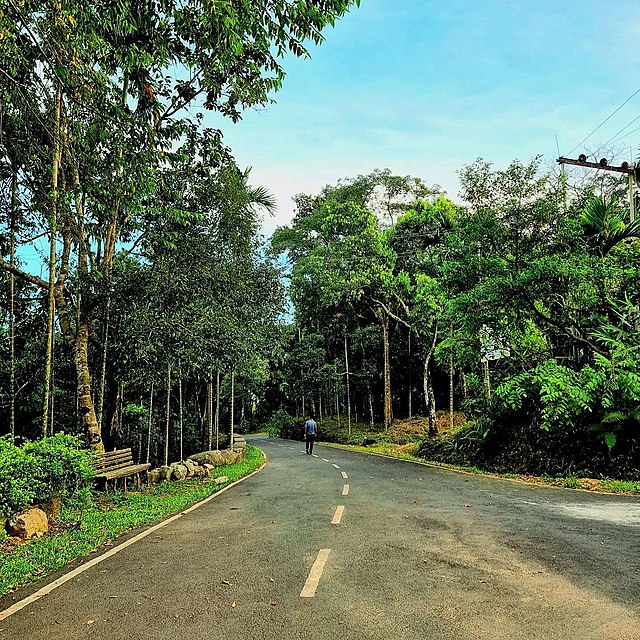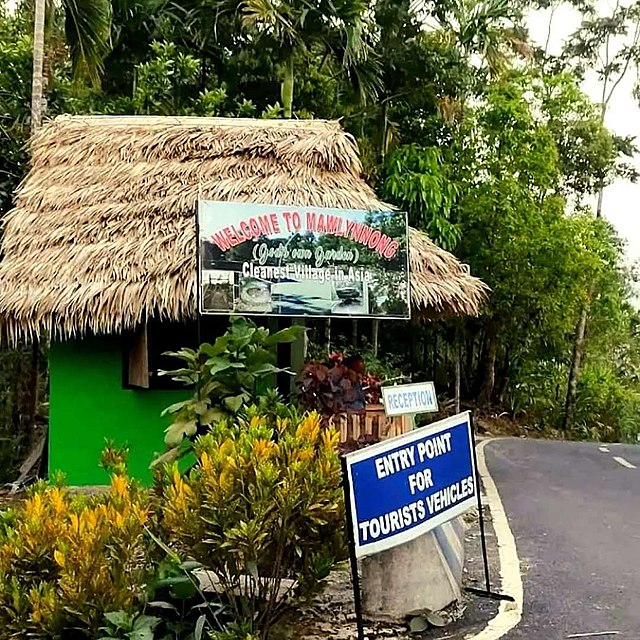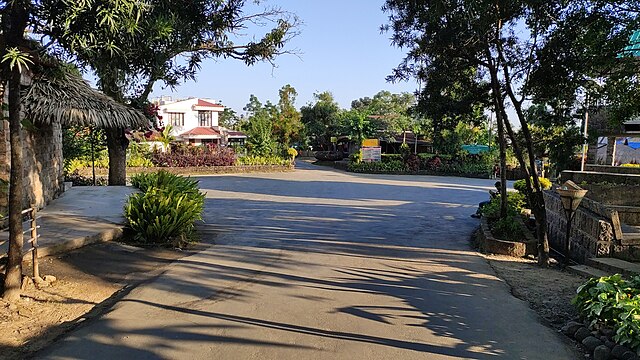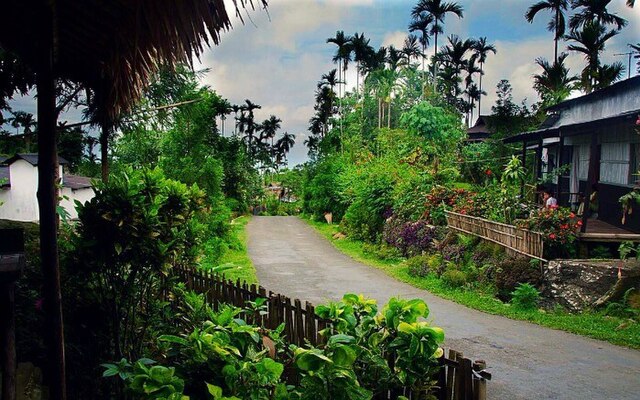Have you ever wondered what paradise looks like? Picture a village where bamboo dustbins line every pathway, where plastic is banned, and where the air is so pure it feels like nature’s own therapy session. Welcome to Mawlynnong, a small village in Meghalaya that’s rewriting the rules of sustainable living and community harmony.
Nestled in the East Khasi Hills of Meghalaya, Mawlynnong isn’t just another tourist destination—it’s a living example of how humans and nature can coexist in perfect harmony. This remarkable village, home to fewer than 500 people, has earned the prestigious title of “Asia’s Cleanest Village” and continues to inspire visitors from around the globe.
What Makes Mawlynnong Special?
The Story Behind the “Cleanest Village” Title
Back in 2003, Discover India magazine bestowed upon Mawlynnong the title of “Asia’s Cleanest Village,” and honestly, they weren’t exaggerating. But here’s the thing—this wasn’t some overnight transformation or government initiative. The cleanliness of Mawlynnong is deeply rooted in the community’s culture and values that have been passed down through generations.
Every morning, you’ll see villagers sweeping their courtyards and streets with handmade brooms. It’s not a chore here; it’s a way of life. The Khasi people believe that cleanliness isn’t just about aesthetics—it’s about respect for Mother Earth and maintaining harmony with their surroundings.
Community-Driven Environmental Conservation
What’s truly remarkable about Mawlynnong is that environmental conservation isn’t imposed from outside—it comes from within. The village has implemented a complete ban on plastic bags and smoking. Instead of plastic, they use bamboo baskets and containers made from locally available materials.
The community has established strict rules about waste management. Organic waste is composted and used as fertilizer for their gardens, while non-biodegradable waste is collected and disposed of responsibly. It’s like watching a masterclass in sustainable living unfold before your eyes.
Location and How to Reach Mawlynnong

Getting There from Shillong
Mawlynnong is located approximately 90 kilometers from Shillong, the capital of Meghalaya. The journey takes you through winding mountain roads that offer breathtaking views of the Khasi Hills. You’ll pass through small villages, terraced fields, and dense forests that give you a preview of the natural beauty that awaits.
The drive typically takes about 2.5 to 3 hours, depending on road conditions and weather. Trust me, every minute of this journey is worth it. The roads can be challenging during monsoon season, so it’s best to check weather conditions before planning your trip.
Transportation Options and Routes
You have several options to reach Mawlynnong. The most convenient is hiring a taxi from Shillong, which costs around ₹3,000-4,000 for a round trip. Shared taxis are also available from Shillong’s Bara Bazaar, but they’re less frequent and require some patience.
If you’re feeling adventurous, you can take a bus to Pynursla and then hire a local taxi to Mawlynnong. However, I’d recommend the direct taxi route, especially if you’re short on time or traveling with family.
The Unique Culture of Mawlynnong
Khasi Tribe Traditions and Lifestyle
The Khasi people of Mawlynnong follow Christianity, but their ancient traditions still influence daily life. You’ll notice that most villagers speak Khasi as their primary language, though they’re also fluent in English and Hindi. The community is incredibly welcoming to visitors, and don’t be surprised if you’re invited for tea or a meal.
Their traditional architecture is fascinating too. Houses are built using locally sourced materials like bamboo, wood, and stone, designed to withstand the heavy monsoon rains. The structures blend seamlessly with the natural landscape, creating a harmonious visual that’s both functional and beautiful.
Matrilineal Society and Women’s Role
Here’s something that might surprise you—Mawlynnong follows a matrilineal system where lineage is traced through the mother’s side. Women play a central role in decision-making, and property is passed down through daughters. It’s refreshing to see a society where women’s voices are not just heard but valued and respected.
This matrilineal structure has contributed significantly to the village’s environmental consciousness. Women, who are traditionally the caretakers of the household, have extended this nurturing instinct to their entire community and environment.
Top Attractions in Mawlynnong Village
The Famous Sky Walk and Tree House
The Sky Walk is probably the most photographed spot in Mawlynnong. This 85-foot high bamboo structure offers panoramic views of the village and surrounding hills. On clear days, you can even see the plains of Bangladesh stretching into the distance. It’s like having a bird’s eye view of heaven itself.
The tree house, built around a living tree, provides another unique vantage point. Climbing up might test your nerve a bit, but the views are absolutely worth it. The structure sways gently with the wind, giving you the sensation of being one with nature.
Living Root Bridges Experience
The living root bridges are perhaps the most extraordinary feature of this region. These bridges are grown rather than built, created by training the roots of rubber trees across streams and rivers. The process takes 15-20 years, but the result is a bridge that actually gets stronger with time.
Single Decker Living Root Bridge
Mawlynnong has its own single-decker living root bridge, which is easily accessible and perfect for photography. Unlike the more famous double-decker bridge in Cherrapunji, this one is less crowded and offers a more intimate experience with this ancient engineering marvel.
Bangladesh Border Views
From the Sky Walk, you can see the Bangladesh border, which is just a few kilometers away. The contrast between the hilly terrain of Meghalaya and the flat plains of Bangladesh creates a stunning visual. It’s one of those moments that makes you appreciate the diverse geography of our subcontinent.
Sustainable Tourism Practices

Eco-Friendly Accommodations
The village has embraced sustainable tourism wholeheartedly. Accommodations are designed to have minimal environmental impact, using solar power, rainwater harvesting, and organic waste management systems. You won’t find luxury resorts here, but you’ll experience something far more valuable—authentic, sustainable living.
Most homestays are run by local families who are passionate about sharing their culture and environmental practices with visitors. It’s not just accommodation; it’s an immersive cultural experience that changes your perspective on sustainable living.
Community-Based Tourism Initiatives
Tourism in Mawlynnong isn’t just about individual profit—it’s a community effort. The village has formed tourism committees that ensure benefits are shared equitably among residents. They’ve also implemented guidelines to prevent over-tourism and maintain the village’s pristine environment.
Visitors pay a small entry fee that goes toward village maintenance and conservation efforts. It’s a perfect example of how tourism can be a force for good when managed responsibly.
Best Time to Visit Mawlynnong
Weather Patterns and Seasonal Considerations
The best time to visit Mawlynnong is between October and April when the weather is pleasant and the skies are clear. The monsoon season (June to September) brings heavy rainfall that can make travel challenging, though the village looks absolutely magical during this time with lush greenery everywhere.
Winter months (December to February) can be quite cold, especially at night, so pack accordingly. The post-monsoon period (October to November) is ideal for photography, as the landscape is at its greenest and most vibrant.
Festival Times and Cultural Events
If you want to experience local culture, try to visit during Khasi festivals like Nongkrem Dance Festival or Shad Suk Mynsiem. These celebrations offer insights into traditional Khasi culture, music, and dance. The villagers are always happy to share their traditions with respectful visitors.
Local Cuisine and Dining Experiences
Traditional Khasi Food
The food in Mawlynnong is simple, organic, and absolutely delicious. Rice is the staple, usually served with fish curry, pork, or chicken prepared with local herbs and spices. The flavors are subtle but incredibly satisfying, reflecting the community’s connection to their land.
Don’t miss trying jadoh (rice cooked with pork and spices), tungrymbai (fermented soybean curry), and various preparations of local fish. The meals are typically served on banana leaves, adding to the authentic experience.
Organic Farming and Local Produce
The village practices organic farming, growing vegetables, fruits, and spices without chemical fertilizers or pesticides. You’ll taste the difference in every bite. The produce is fresh, flavorful, and reflects the clean environment in which it’s grown.
Local families often invite visitors to see their gardens and explain their farming practices. It’s educational and inspiring to see how traditional knowledge and modern understanding of organic farming come together.
Photography and Nature Watching
Best Spots for Photography
Mawlynnong is a photographer’s paradise. The Sky Walk offers the best panoramic shots, while the living root bridge provides unique architectural photography opportunities. The village streets, with their bamboo dustbins and flowered courtyards, make for excellent documentary photography.
Golden hour (early morning and late afternoon) offers the best lighting for landscape photography. The interplay of light and shadow through the forest canopy creates magical moments that are perfect for capturing the essence of this special place.
Flora and Fauna of the Region
The village is surrounded by dense forests rich in biodiversity. You’ll spot various species of birds, butterflies, and insects. The flora includes numerous medicinal plants, orchids, and the famous rubber trees whose roots form the living bridges.
Birdwatchers will be delighted by the variety of species, including several endemic to the region. The clean environment and minimal human disturbance have created a thriving ecosystem that’s increasingly rare in our modern world.
Nearby Attractions and Day Trips
Riwai Village and Double Decker Root Bridge
Just a short hike from Mawlynnong, Riwai village is home to the famous double-decker living root bridge. This incredible structure is about 180 years old and can hold up to 50 people at once. The trek to reach it is moderate and takes about 30-45 minutes through beautiful forest paths.
The double-decker bridge is an engineering marvel that showcases the ingenuity of the Khasi people. Standing on this living structure, you can’t help but marvel at the patience and foresight of the generations who grew it.
Dawki River and Crystal Clear Waters
About 30 kilometers from Mawlynnong, the Dawki River is famous for its crystal-clear waters. The river forms the border between India and Bangladesh, and its transparency is so remarkable that boats appear to be floating on air. It’s a perfect spot for a day trip and offers excellent opportunities for photography and boating.
Accommodation Options in Mawlynnong
Homestays and Guest Houses
Accommodation options in Mawlynnong are limited but authentic. Most visitors stay in homestays run by local families, which offer basic but clean rooms and home-cooked meals. These homestays provide an excellent opportunity to interact with locals and learn about their lifestyle.
Prices are reasonable, usually ranging from ₹800-1500 per night, including meals. The accommodations are simple but comfortable, with clean bedding and basic amenities. Don’t expect luxury, but do expect warmth and hospitality that you’ll remember long after your visit.
Camping and Outdoor Experiences
For adventure enthusiasts, camping is an option, though you’ll need to seek permission from the village authorities. Camping under the stars in this pristine environment is an unforgettable experience, but make sure to follow Leave No Trace principles and respect the local ecosystem.
Travel Tips and Practical Information

What to Pack and Bring
Pack light, but don’t forget essentials like comfortable walking shoes, rain gear (especially during monsoon), warm clothes for evenings, and a good camera. Bring a reusable water bottle and avoid bringing plastic items, as they’re not welcome in the village.
Don’t forget to bring some cash, as ATM facilities are limited. Most transactions are still cash-based, including homestay payments and local purchases.
Local Etiquette and Cultural Sensitivity
Respect local customs and traditions. Ask permission before photographing people, especially elderly villagers. Participate in the village’s cleanliness practices by not littering and following waste disposal guidelines.
Be mindful of noise levels, especially in the evening. The village values peace and tranquility, and loud music or conversations can disturb the serene atmosphere. Remember, you’re not just visiting a destination—you’re entering a community’s home.
The Environmental Lessons from Mawlynnong
Mawlynnong teaches us that environmental conservation doesn’t require complex technology or massive investments. It requires a shift in mindset, community cooperation, and respect for nature. The village proves that small communities can make a big difference in environmental protection.
The success of Mawlynnong lies in its approach to making environmental consciousness a part of daily life rather than an additional burden. Every resident is an environmental steward, and this collective responsibility has created a sustainable model that other communities can learn from.
Their waste management system is simple yet effective, their tourism model is sustainable and community-focused, and their lifestyle choices reflect a deep understanding of environmental balance. In a world grappling with climate change and environmental degradation, Mawlynnong stands as a beacon of hope and practical solutions.
Conclusion
Mawlynnong isn’t just a destination; it’s a revelation. This small village in Meghalaya has shown the world that paradise isn’t a fantasy—it’s a choice. Through community effort, environmental consciousness, and respect for nature, the people of Mawlynnong have created something truly special.
Your visit to Mawlynnong will leave you with more than just photographs and memories. It will change your perspective on what’s possible when communities come together with a shared vision of sustainability and harmony. In a world that often seems chaotic and polluted, Mawlynnong reminds us that another way of living is not only possible but also incredibly rewarding.
The village challenges us to think about our own environmental impact and inspires us to make positive changes in our communities. After all, if a small village in Meghalaya can become Asia’s cleanest village, what’s stopping the rest of us from following their example?
Frequently Asked Questions
Q1: How many days should I spend in Mawlynnong?
A: Two to three days are ideal for experiencing Mawlynnong fully. This gives you enough time to explore the village, visit nearby attractions like the living root bridges, and truly appreciate the local culture without rushing. Day one can be spent exploring the village and Sky Walk, day two for the root bridges and nearby areas, and day three for relaxation and cultural immersion.
Q2: Is it safe to travel to Mawlynnong with children?
A: Yes, Mawlynnong is very safe for families with children. The village has a low crime rate, and the community is very welcoming to visitors. However, keep an eye on children near the Sky Walk and root bridges, as these structures require careful navigation. The clean environment and fresh air actually make it an excellent destination for families seeking a healthy getaway.
Q3: Can I use credit cards in Mawlynnong?
A: No, Mawlynnong operates primarily on a cash-based economy. There are no ATMs in the village, so make sure to withdraw sufficient cash from Shillong before your trip. Most homestays, restaurants, and local shops only accept cash payments. It’s advisable to carry small denominations for easier transactions.
Q4: What should I do if I get sick during my stay in Mawlynnong?
A: The village has a basic health center for minor ailments, but for serious medical issues, you’ll need to travel to Shillong. Carry a basic first-aid kit and any prescription medications you might need. The clean environment and fresh air generally contribute to good health, but it’s always better to be prepared, especially if you have existing health conditions.
Q5: Are there any restrictions on photography in Mawlynnong?
A: There are no major restrictions on photography of landscapes and village scenes, but always ask permission before photographing people, especially elderly villagers or children. Some families may request a small fee for posed photographs. Be respectful of private property and religious sites. The village encourages photography that showcases their environmental conservation efforts and natural beauty.

